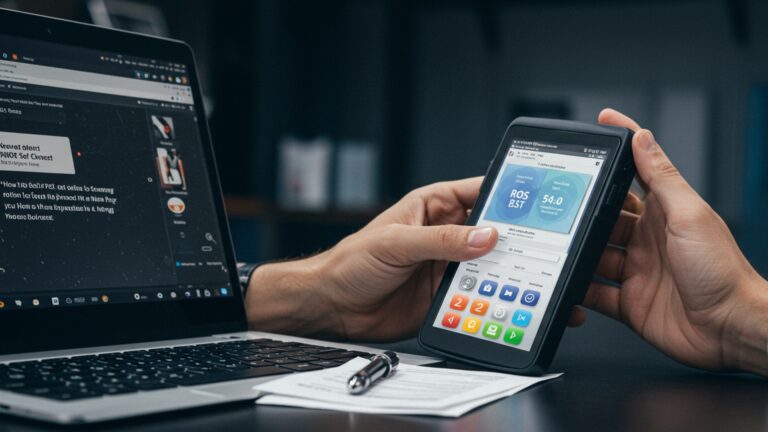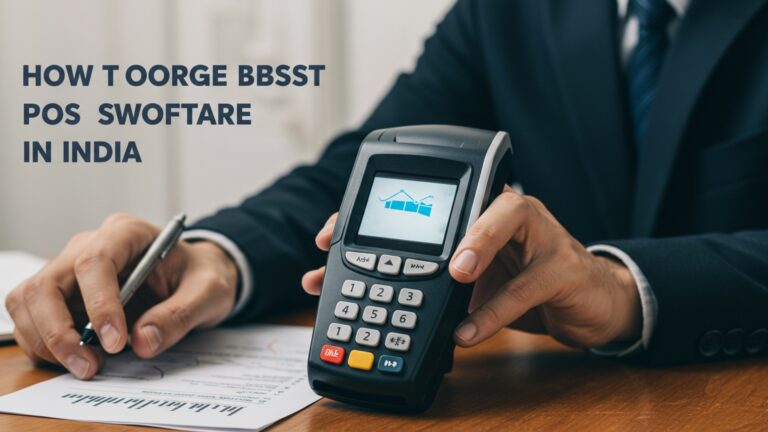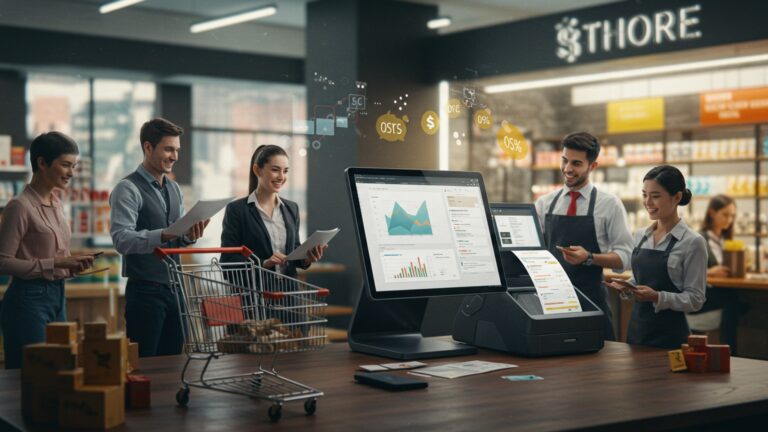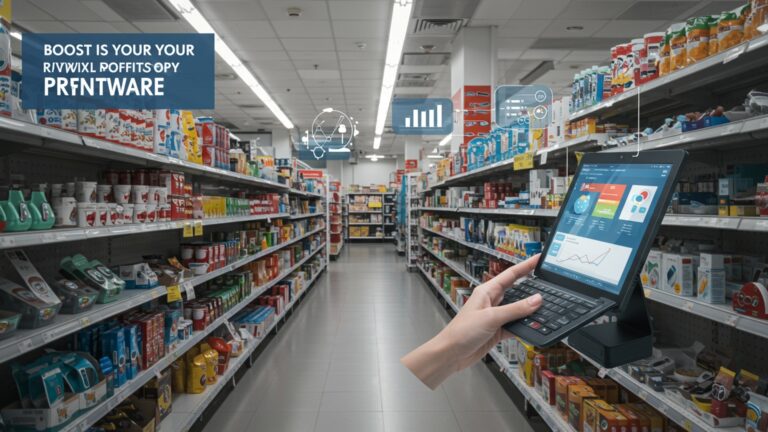How to Choose the Best Billing and POS Software for Your Business
In today’s fast-paced commercial landscape, the choice of billing and POS software profoundly impacts operational efficiency and customer satisfaction, moving far beyond mere transaction processing. Businesses, from bustling retail outlets integrating omnichannel inventory management to service providers requiring seamless appointment booking and invoicing, now navigate a complex ecosystem of solutions. Recent developments in cloud-based platforms and AI-driven analytics offer powerful insights into sales trends and customer behavior, transforming a simple checkout system into a strategic growth engine. Integrating features like contactless payment options and real-time inventory synchronization across physical and digital storefronts is no longer a luxury but a necessity for maintaining a competitive edge. Selecting the optimal software demands a keen understanding of current market demands, scalable capabilities. future-proof functionality to ensure seamless operations and an elevated customer experience.
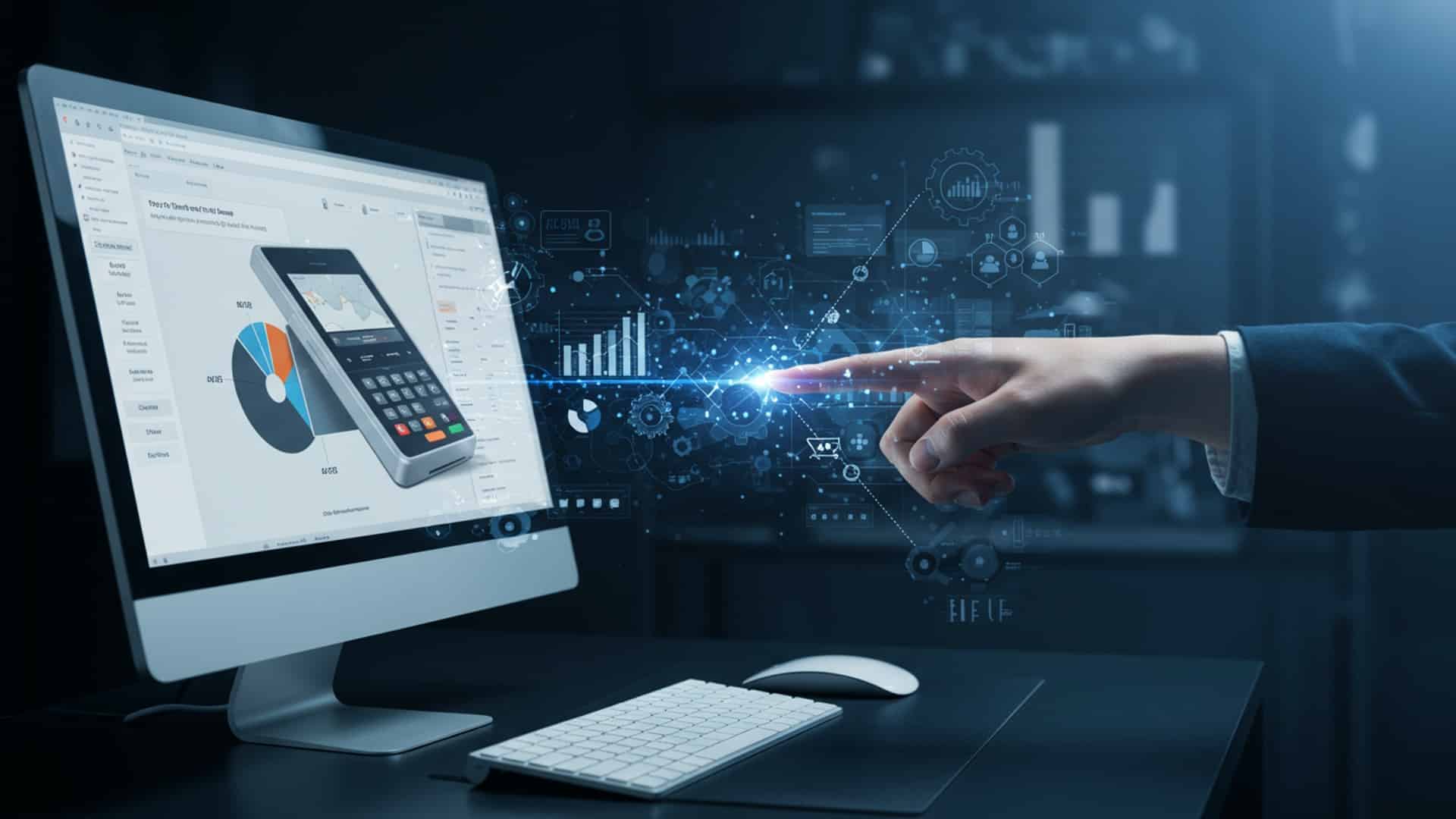
The Crucial Role of Integrated Billing and POS Software
In today’s fast-paced business environment, efficient operations are paramount. For any enterprise dealing with sales, inventory. customer transactions, the choice of the right billing and POS software can significantly impact profitability, customer satisfaction. overall operational efficiency. This isn’t merely about processing payments; it’s about streamlining your entire sales ecosystem, from the moment a customer makes a purchase to the backend inventory updates and financial reporting. A robust billing and POS software solution acts as the central nervous system for your sales operations, ensuring accuracy, speed. insightful data for strategic decision-making.
Defining Key Components: Billing Software vs. POS Software
While often used interchangeably or together, it’s essential to interpret the distinct, yet complementary, functions of billing software and Point of Sale (POS) software.
- Billing Software
- POS Software
Primarily focuses on generating invoices, tracking payments, managing accounts receivable. sometimes handling subscription billing or recurring charges. It’s often more focused on the financial documentation and follow-up aspects of a transaction, especially for service-based businesses or B2B operations.
This is the system used by businesses to complete sales transactions. It typically includes hardware components like cash registers, barcode scanners. card readers, along with software to ring up items, apply discounts, process various payment types (cash, card, mobile). print receipts. Modern POS systems often extend to inventory management, customer relationship management (CRM). employee management.
The term ‘billing and POS software’ often refers to an integrated system that combines these functionalities, providing a comprehensive solution for managing sales from start to finish. This integration is where the real power lies, eliminating data silos and manual reconciliation.
Essential Features to Look for in Billing and POS Software
When evaluating potential billing and POS software solutions, a core set of features will dictate their effectiveness for your business. Prioritizing these will ensure you select a system that genuinely supports your operational needs.
- Sales Processing & Transaction Management
- Inventory Management
- Customer Relationship Management (CRM)
- Reporting and Analytics
- Employee Management
- Multi-Location Support
- Hardware Compatibility
- Offline Mode
The ability to quickly and accurately process sales, including item lookup, price adjustments, discounts, returns. exchanges. It should support various payment methods (cash, credit/debit cards, mobile payments, gift cards) and offer flexible receipt options (print, email, SMS).
Critical for retail and product-based businesses. This feature tracks stock levels in real-time, manages product variants, automates reorder points. helps prevent stockouts or overstocking. An integrated billing and POS software will update inventory instantly upon sale.
Tools to capture customer data, track purchase history, manage loyalty programs. facilitate targeted marketing efforts. Understanding your customers through this data can drive repeat business.
Comprehensive reporting on sales performance, popular products, peak hours, employee performance. inventory turnover. Robust analytics are vital for making informed business decisions and identifying trends.
Features for managing staff shifts, tracking sales performance per employee. setting user permissions to control access to sensitive data.
If you operate more than one store or outlet, the billing and POS software should be able to synchronize data across all locations, providing a unified view of your business.
Ensure the software is compatible with your existing or desired POS hardware, such as barcode scanners, receipt printers, cash drawers. card readers.
A crucial feature for maintaining operations during internet outages, ensuring sales can still be processed and data synced once connectivity is restored.
On-Premise vs. Cloud-Based Billing and POS Software: A Comparison
The architecture of your billing and POS software system is a fundamental choice that impacts cost, accessibility. maintenance. Here’s a comparison of the two primary models:
| Feature | On-Premise (Local) | Cloud-Based (SaaS) |
|---|---|---|
| Definition | Software installed and run on local servers and computers within your business premises. | Software hosted on remote servers and accessed via the internet through a web browser or app. |
| Cost | Higher upfront cost (hardware, licenses), lower recurring fees. Requires IT staff for maintenance. | Lower upfront cost (subscription model), predictable monthly/annual fees. Vendor handles maintenance. |
| Accessibility | Limited to local network, potentially requiring VPN for remote access. | Accessible anywhere with an internet connection, on multiple devices. |
| Maintenance & Updates | Your responsibility (IT staff, manual updates). | Vendor’s responsibility (automatic updates, security patches). |
| Data Security | You control security measures. also bear full responsibility for backups and protection. | Vendor manages security, often with robust protocols. you rely on their measures. |
| Scalability | Requires hardware upgrades and manual configuration as your business grows. | Easily scalable by adjusting subscription plans, adding users/locations with minimal effort. |
For most modern businesses, especially small to medium-sized enterprises (SMEs), cloud-based billing and POS software offers greater flexibility, lower initial investment. reduced IT overhead, making it a highly attractive option.
Integration Capabilities and Scalability
The true power of modern billing and POS software often lies in its ability to integrate seamlessly with other business tools. When selecting a solution, consider its ecosystem and how well it can “talk” to your existing or future systems.
- Accounting Software Integration
- E-commerce Platform Integration
- Payment Gateway Integration
- Third-Party App Marketplaces
Direct integration with platforms like QuickBooks, Xero, or Sage eliminates manual data entry, reducing errors and saving significant time during reconciliation and financial reporting. Sales data, expenses. payment insights flow automatically.
For businesses with an online store (e. g. , Shopify, WooCommerce), a unified billing and POS software ensures inventory is synced across all channels, preventing overselling and providing a consistent customer experience whether they shop online or in-store.
The software should support multiple payment processors to give you flexibility and potentially better rates.
Many robust billing and POS software solutions offer app marketplaces where you can add specialized functionalities, such as advanced analytics, marketing automation, or employee scheduling tools, as your business needs evolve.
Scalability is equally vital. Your chosen billing and POS software should be able to grow with your business without requiring a complete system overhaul. This means supporting increased transaction volumes, additional product lines, new store locations. more users without performance degradation or prohibitive cost increases. Look for vendors that offer tiered plans or modular additions.
Security and Compliance Considerations
Handling sensitive customer data and financial transactions demands stringent security measures. The billing and POS software you choose must prioritize data protection and adhere to relevant compliance standards.
- PCI DSS Compliance
- Data Encryption
- User Access Controls
- Data Backup and Recovery
- Fraud Prevention
If you process credit card payments, your billing and POS software and its associated payment processors must be Payment Card Industry Data Security Standard (PCI DSS) compliant. This protects cardholder data.
Ensure all sensitive data, both in transit and at rest, is encrypted. This includes customer details, sales data. payment details.
The software should allow you to set granular permissions for different employee roles, ensuring that only authorized personnel can access or modify specific functions and data.
grasp the vendor’s data backup strategy (for cloud solutions) or ensure you have a robust backup plan (for on-premise). What happens in case of data loss? How quickly can data be recovered?
Look for features that help detect and prevent fraudulent transactions, such as address verification services (AVS) and CVV checks.
Always review the vendor’s security policies and practices. consider their track record in data protection. Transparency in these areas is a strong indicator of a reliable partner.
Vendor Support, Training. User Experience
Even the most feature-rich billing and POS software can be rendered ineffective without adequate support and a user-friendly interface. These factors directly impact your team’s efficiency and your ability to resolve issues quickly.
- Customer Support
- Training Resources
- User Interface (UI) and User Experience (UX)
Evaluate the availability and quality of customer support. Do they offer 24/7 support? What channels are available (phone, email, chat, knowledge base)? Look for vendors with a reputation for responsive and helpful support.
How does the vendor help you get started? Do they offer onboarding assistance, online tutorials, webinars, or comprehensive documentation? Effective training minimizes the learning curve for your staff.
The software should be intuitive and easy to navigate. A cluttered or complex interface can lead to errors and slow down transaction times, frustrating both employees and customers. A well-designed billing and POS software reduces training time and boosts operational speed.
Understanding Pricing Models and Total Cost of Ownership (TCO)
The cost of billing and POS software isn’t just the sticker price. You need to consider the total cost of ownership (TCO) over the long term.
- Subscription Fees
- Transaction Fees
- Hardware Costs
- Setup and Installation Fees
- Training Costs
- Add-on Features/Integrations
Most cloud-based solutions operate on a monthly or annual subscription model, often tiered based on features, number of users, or transaction volume.
Some payment processors charge a percentage per transaction, which can vary. Compare these rates carefully.
Account for the cost of POS hardware (terminals, scanners, printers, cash drawers). Some vendors offer bundles.
One-time fees for initial setup, data migration, or on-site installation.
While some basic training may be included, extensive or specialized training might incur additional costs.
Many billing and POS software solutions offer a basic package with additional features or integrations available at an extra cost.
Always get a clear, itemized quote and grasp what’s included and what might incur additional charges. A seemingly cheap initial price might hide expensive add-ons or transaction fees that quickly inflate the TCO.
Implementation and Data Migration
The process of getting your new billing and POS software up and running is a critical phase. A smooth implementation can prevent disruptions to your business.
- Data Migration
- Configuration and Customization
- Testing
If you’re transitioning from an older system, how will your existing customer data, product catalog. sales history be migrated? A good vendor will offer tools or assistance for this process.
The software needs to be configured to your specific business rules, tax rates, product categories. workflows. Some businesses might require custom integrations or unique features, so assess the software’s flexibility.
Before going live, thoroughly test all functionalities, including sales processing, returns, payment types, inventory updates. reporting, to ensure everything works as expected.
Plan for a transition period where staff are fully trained and comfortable with the new billing and POS software before relying on it entirely. This minimizes errors and ensures a seamless experience for your customers.
Conclusion
Choosing the ideal billing and POS software isn’t merely a purchase; it’s a strategic investment in your business’s future. The key takeaway is to prioritize scalability, seamless integration. user-friendliness over just the initial cost. Remember my friend’s boutique, ‘Style Haven’, which initially opted for a basic system only to face constant inventory discrepancies; upgrading later proved far more disruptive. My personal tip is to always request a live demo with your specific business context in mind, truly testing its capabilities for tasks like real-time stock management, a critical feature highlighted in recent retail tech discussions. The current trend leans heavily towards cloud-based solutions offering AI-driven analytics and robust omnichannel support, ensuring your business stays agile in a competitive market. Don’t settle for anything less than a system that can grow with you. By taking the time to carefully evaluate, you’re not just buying software; you’re empowering your operations, freeing valuable time. setting a robust foundation for enduring success. Take this decisive step with confidence, knowing you’re building a smarter, more efficient future for your enterprise.
More Articles
How to Choose the Best Android POS Software for Your Business
Discover How POS Billing Software Transforms Your Business Operations
Learn How to Choose the Right POS Software for Efficient Retail Operations
Master Restaurant Operations 10 Benefits of POS Software in India
How to Easily Set Up and Use Mobile POS Software for Seamless Sales
FAQs
Where do I even start when looking for billing and POS software?
Begin by clearly defining your business’s specific needs. What kind of products or services do you offer? How many locations do you have? What payment methods do you accept? Do you need features like inventory management, customer loyalty programs, or employee time tracking? Knowing your core requirements is the most critical first step.
Does my specific business type matter for the software I pick?
Absolutely! A restaurant needs different features like table management and kitchen display systems compared to a retail store that might prioritize inventory tracking, barcode scanning. e-commerce integration. Industry-specific software often comes with tailored functionalities that can significantly streamline your operations.
Cloud-based or on-premise – what’s the difference and which is better for me?
Cloud-based (SaaS) software runs over the internet, offering remote access, automatic updates. generally lower upfront costs. On-premise software is installed directly on your computers, giving you full control but requiring more IT maintenance and a higher initial investment. Cloud is often preferred for flexibility and scalability, especially for small to medium-sized businesses.
How vital is it to check for integration capabilities?
Super essential! Your POS system shouldn’t operate in a silo. Ideally, it should seamlessly integrate with other essential tools you use, like accounting software (e. g. , QuickBooks), e-commerce platforms, CRM. payment processors. Seamless integration saves time, reduces errors. provides a more holistic view of your business.
What should I look out for regarding pricing and potential hidden fees?
Don’t just look at the monthly subscription fee! Ask about transaction fees, hardware costs, setup fees, training costs. any charges for additional features or users. Some providers have tiered pricing plans, so ensure the one you choose covers your current and future needs without any unwelcome surprises.
Is good customer support really that big of a deal?
Oh, it’s a huge deal. When your system goes down or you have a critical question during a busy period, reliable and responsive customer support can be a lifesaver. Look for providers offering 24/7 support, multiple contact methods (phone, chat, email). a comprehensive knowledge base or training resources.
How can I tell if the software will grow with my business?
Look for scalability. Can it easily handle more users, more transactions, or additional locations as your business expands? Will it integrate new features as your needs evolve? A good software solution should be flexible enough to adapt to your future growth without forcing you to switch systems entirely down the line.


